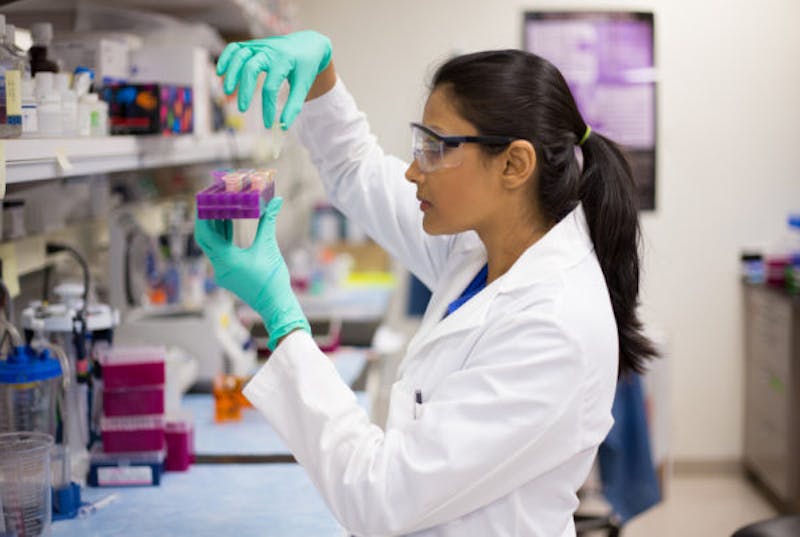
At Pelvic Pain Doc, our patients’ treatment, recovery and well-being is our number one priority. We stay up to date with what’s happening in the world of pelvic pain, and are always researching the latest technologies and treatment techniques to provide our patients with the very best care.
One of the most recent innovations in pelvic pain is transforming how we test for and diagnose chronic urinary tract infections (UTIs), and ultimately redefining thoughts on interstitial cystitis. The innovation we’re discussing is MicroGenDX testing and it allows us to more accurately identify the microbes that cause chronic infection, leading to better diagnosis and treatment of chronic UTIs and interstitial cystitis. Curious about how MicroGenDX testing works and how it might help you overcome your pelvic pain? Read on!
What is Interstitial Cystitis?
To understand how MicroGenDX testing works, we first need to look at what it seeks to treat in the first place. This new testing model helps to identify the specific fungi and bacteria that could be playing a role in a condition called interstitial cystitis (or bladder pain syndrome).
Interstitial cystitis is often described by what it is not: it is not a urinary tract infection. While this condition is characterized by an inflamed bladder with symptoms similar to a UTI, the defining factor is that there is no infection present. If you’ve been experiencing chronic urinary tract symptoms — such as a frequent, urgent need to urinate or pain during urination — but cultures consistently show that you do not have an infection, you may be diagnosed with interstitial cystitis/bladder pain syndrome.
An estimated 4 to 12 million Americans suffer from bladder pain syndrome. But despite its prevalence, this condition is extremely misunderstood and commonly misdiagnosed. Testing has historically been inaccurate and inadequate, leading only to further confusion and frustration for those suffering from the condition. But perhaps this can change with the advent of MicroGen DX testing.
How MicroGenDX Testing is Transforming Interstitial Cystitis Diagnosis
If you’ve had chronic urinary tract infections, you know the drill: go to the doctor, provide a urine sample and wait for your results. If the test comes back positive for bacteria, your doctor gives you antibiotics to clear the infection. If there’s no infection present time after time, you’ll likely be diagnosed with interstitial cystitis. It’s a frustrating experience that’s disruptive to your life and finding relief can often feel futile.
The problem with these traditional tests is that they are not sensitive enough to detect certain bacteria that could be contributing to chronic UTIs and interstitial cystitis, as well as other urinary problems. Inflammation-causing microbes often fly under the radar, making it difficult for doctors to diagnose and treat patients who present with urinary tract symptoms.
MicroGen DX testing (also known as Next Generation testing) has changed everything. This innovative testing method sequences the patient’s DNA to identify bacteria and fungi in the urine sample from a massive database of over 50,000 microorganisms. Most of these microorganisms cannot be detected by standard urine tests, making Next Generation the most accurate test of its kind on the market.
How Does the MicroGenDX Test Work?
MicroGenDX testing for interstitial cystitis happens in two phases, using two different technologies to provide two different sets of results that together give an accurate picture of a patient’s condition. Here’s how it works:
In the first level of testing, MicroGenDX does a rapid screening of your urine sample using polymerase chain reaction (PCR) to search for 21 different pathogens in your urine, as well as eight drug resistance genes. Your doctor may request a test for a specific pathogen or do the full panel screening. However, if the microorganism that’s causing your infection isn’t part of the panel, it will not show up in your results. It also cannot tell you how these organisms relate to your body’s total urinary microbiome. That’s where the second level of testing comes in.
In the second phase, MicroGenDX uses the same urine sample to do a comprehensive genetic test to look for a specific gene that all bacteria share and a specific gene that all fungi share. This second level testing is much more accurate than the PCR test because it compares the genetic material of your sample against more than 50,000 microorganisms, instead of only the 21 pathogens contained in the PCR panel.
Is MicroGenDX Testing Right for You?
One of the hardest parts of a physician’s job is knowing that patients often suffer for years without finding relief. Unfortunately, interstitial cystitis is one of those conditions that is typically tough to diagnose and treat — but that may also be because traditional testing doesn’t provide the information we need to treat infections appropriately.
There is still a lot to learn about MicroGen testing and the bladder ecosystem as a whole. We now know that the bladder has its own unique microbiome with natural bacteria and microflora, but the presence of these bacteria does not mean you have an infection, nor does it mean you have interstitial cystitis. These bacteria are simply a normal, healthy part of your bladder’s make-up, much like your gut needs certain bacteria to stay healthy.
Since the MicrogenDX test detects all bacteria (not just the infection-causing kind), this means that no matter what, the test will show bacteria in your urine. But remember, this does not confirm a UTI or interstitial cystitis diagnosis. What matters is the type of bacteria present and how it fits in with your total bladder microbiome, as well as how it relates to the bladder microbiomes of patients without symptoms.
With Next Generation testing, our hope is to finally give our chronic UTI and interstitial cystitis patients the answers, treatment and relief they deserve. Wondering if the MicroGenDX test can help you? You might be a candidate for this type of testing if you’re experiencing:
Chronic urinary tract symptoms, including frequent, urgent need to urinate or pain during urinationDifficulty starting or completing a streamPain or pressure in the abdomen or bladderPain with bladder fillingNegative urine tests despite UTI symptomsChronic pain in the urinary tractEscalation of symptoms with no reliefA diagnosis of interstitial cystitis
If you’ve been told you have interstitial cystitis, or your doctor keeps prescribing antibiotics for your UTIs but your infection keeps coming back, ask your pelvic pain specialist about MicroGen DX testing. Or contact Pelvic Pain Doc to book a consultation with New York’s pelvic pain specialist Dr. Sonia Bahlani today.

